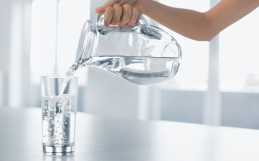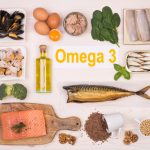For several years, I have been using various breathing protocols to reduce mental/emotional stress, improve quality and quantity of sleep, relax my body, improve facial structure and optimize my overall health.
My functional dentist, Dr Mae Abdalla, gifted me the book by James Nestor called Breath: The New Science of a Lost Art. I found it to be a very interesting and easy read as Nestor was able to blend the science and history of breathing with personal experience as an investigative journalist. The topic of breathing is extensively reviewed; from all the problems associated with mouth breathing, to the health benefits of slowing down or speeding up your breath. He describes why modern humans are the only species (of 6500 other mammals) with chronically crooked teeth. We also snore and have poor sleep quality, both consequences associated with how we breathe.
The Mouthbreathing Experiment
Nestor describes how he, like most adults, had suffered from a host of respiratory problems in his life even though he exercised often, ate the right foods and slept eight hours per night. Eventually he landed in a breathing class, had a unique experience and subsequently entered the rabbit hole of breath to understand the science of breathing and respiration.
Nestor and his experiment partner, Anders Olson (a breathing therapist and also a breathing aficionado), put themselves through a masochistic 20-day study at Stanford University to test the long-held belief that the pathway through which we breath-nose or mouth- does not make much of a difference.
The science is pretty clear that when we breathe from the mouth we are breathing unfiltered, unheated, raw air that saps us of moisture, irritates the lungs, loosens back tissues of the mouth (therefore more likely to snore), neurological issues, etc. So we do know breathing through our mouths is not good. What we don’t know is how long this takes to have all these problems arise. Some speculate that it takes years. Nestor convinced the chief rhinologist at Stanford to run this experiment on him and Olson to question the long-held belief.
During the first phase of the experiment, they spent the first ten days or 240 hours attempting to live everyday lives: eating, exercising and sleeping as usual while only breathing through their mouths and keeping their noses plugged (with silicone plugs taped shut). For Anders Olson, who is a breath expert and therapist, is the equivalent of putting him on a Super Size Me diet for breathing. The big difference is that most people don’t eat fast food every meal of the day but up to half of us breathe through our mouths only all day and night. W
When the nasal cavity gets congested , airflow decreases and bacteria flourish can lead to infection. The results of the first phase range from feeling awful, spiked blood pressure, snoring increased 4,820%, oxygen levels dropped to concerning levels, sinus headaches, unquenchable thirst, frequent urination at night, poor physical activity performance and feeling constantly fatigued.
The second phase of the experiment involves everything in the first phase but switching the pathway and breathing only through their noses and practicing a number of breathing techniques throughout the day for another ten days. The results were incredible. Three nights of mouth taping for sleep reduced snoring from four hours to ten minutes! As the snoring disappeared the apnea events disappeared as well. All other issues were reversed.
Why do we all ‘mouthbreathe’, snore and need braces? – the ‘Dis-evolution’ of breathing
The term “Dis-evolution” was coined by Harvard biologist Daniel Lieberman. He explains why humans are changing in the wrong direction based on the environment and lifestyle we choose. This is why we breathe so poorly, have neck, back and foot pain. Our sedentary lifestyle, poor posture and shoe selection are part of these issues.
Thousands of years ago as our brains became larger and needed space and took it from our
Old skulls at the Morton Collection at the University of Pennsylvania compared to modern skulls:
- 90% of us have small mouths, so small that teeth no longer fit and grow crooked
- Sinuses are smaller and stunted
- Chronic sinusitis, snoring, sleep apnea co
- Old skulls had straight teeth,
All of this happened in the last 400 years with the industrialization of our food chain. Modern human beings are often bottle-fed and weaned into soft highly processed foods which both stunt bone development of dental arches and sinus cavities leading to chronic nasal congestion and chronic nighttime choking known as sleep apnea later in life. These lifestyle changes have been too rapid to give the structural anatomy time to adapt.
Mouthbreathing linked to poor posture
There is significant scientific data linking mouthbreathing with forward head posture (video review) and postural changes. There seems to be a relatively small window to change these habits in children at an early age.
“Forty percent of today’s population suffers from chronic nasal obstruction, and around half of us are habitual mouthbreathers, with females and children suffering the most.”
Undiagnosed and untreated obstructive slee
Restorative breath
“These slow and long techniques are open to everyone- old and young, sick and healthy, rich and poor. They’ve been practiced in Hinduism, Buddhism, Christianity, and other religions for thousands of years but only recently we have learned how they can reduce blood pressure, boost athletic performance and reduce stress and balance the nervous system.”
Simply by exhaling slowly our physiology changes and what is so amazing is that we can measure it simply. With many of our new-found personal measuring devices such as rings, watches and other monitors we can watch our heart rate lower, increase our heart rate variability (reduce our fight or flight response and increase our rest and digest response). This only takes a few minutes to change. If we do this consistently we can likely make significant and more lasting changes to our health.
Simple tips to stop mouthbreathing, improve your breathing and overall health:
Keep your mouth closed:
Exhale longer:
Chew
Breathe more, on occasion.
Breath holds
Five Tibetan Rites, exercise Nestor used to increase lung capacity












